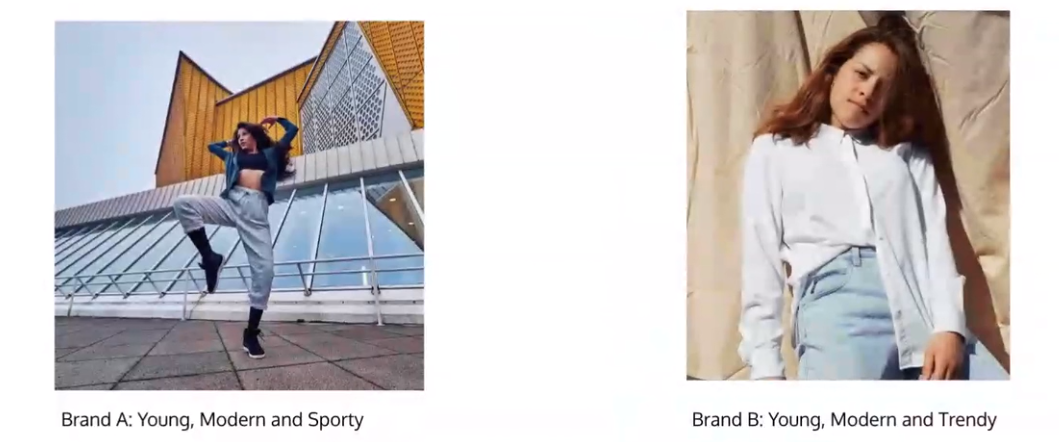Call us biased, but we reckon Friday's AntiConLX Global was our best one yet! And a big part of our success this year was our fantastic speakers, like Appu Shaji CEO and Chief Scientist at Mobius Labs GmbH. Whether you're catching up on sessions you missed or just want to rewatch - let's jump right into his session on AI and Machine Learning.
Marketing exists as both a scientific and creative profession. All you data-heads who have been forced to write copy for socials know the pain all too well.
It's an industry that is at the intersection of content and technology and is considered both an art of understanding tastes, and a science of measuring intent. But this is not easily done. With the sheer scale of content needed and the speed at which choices have to be made, marketers often have to neglect one or the other. But this doesn't have to be the case.
In Appu's talk, he addresses how visual solutions can be a marketer's best friend. If we learn to train machines to capture both visual and creative tastes, and fit audience behaviour, we'll be able to work faster and with more ease. How will AI help with that, you ask? Through powerful and automatic recommendations.
Appu is CEO and Chief Scientist of Mobius Labs, a provider of next-generation computer vision solutions. He has over 18 years of experience in Computer Vision and AI, having started 3 companies including Mobius Labs in 2018. His goal has been to take computer vision to every application. Previously, Appu headed research and AI innovation at EveEm.
I started my career more as a geek or a nerd. I did a PhD and postdoc in machine learning and was into mathematics. But one other part of me sort of loved the art side, the business side.
So, like his own personality, Appu looked to combine the two fields. He aims to make sure that all these pieces interact. So, that's where AI algorithms come in. Specifically, the Mobius algorithm goes beyond existing algorithms to capture something more subjective, and more personal.
So, how can machine learning come into that process, and lead from marketers' own processes, in an interesting way? Well, content, of course. It is king, after all.
One of the biggest issues and challenges with content is asking why certain content is interesting for a specific audience. How can you understand and identify the reasons, and how can you track interest? Then, how do you actually find the content which is engaging to an audience, and then how can you find that in scale?
The first step is to identify audience tastes. But this also has to be done on the macro level, and then in more subtle details. What are the trends people are looking for at this moment? With Morbius Labs, they concentrate on a visual medium, in terms of images, and videos.
Finding this correct content, in order to communicate your message to an audience, is highly important. But in the digital world, every customer is bombarded with waves of content. So the act of curation is difficult. So, how can machine learning algorithms come in?
Appu gives an example. Take a company marketing for two different brands, both for young people from 2022, with modern aesthetics. But with both, there is a visual difference. One is sportier, one is more trendy. This is very difficult to quantify. But this is where AI comes in. With Mobius' machine learning models, which can be trained to distinguish between these two brands, and select images of the one particular brand, marketers can find images which fit perfectly with that brand. One was performing well with influencers in a specific niche, so was chosen for the brand it fitted most.

Another aspect of machine learning is the trend aspect. This can be seen as a 'real-life' measurement, where marketers can actually look at, surprise surprise, real-life measurements. If you have the data to train your AI models, you can capture the trends happening for your use cases.
Often, this is a very emotional sell. People never buy a product, they are buying a feeling, nostalgia, or something with identifiable images. So, if you can hyper-personalise your messaging, the marketing ROI becomes meaningful.
So, making it hyper-personalised is something Morbius clients are able to do, as they can understand what is embedded in the visual data, as the AI is able to un-mine it. This was a typical blocker. Often marketers can get all the cookie data and can get all the analytics data. But what is really missing is they don't have the content that users were looking for, or interacting with.
When they understand the content people want, brands can create the product and experience they want. For example, they could send hyper-specialised mailing campaigns. All this feeds into generating the perfect product. Appu gives the example of a photo book customer, who was printing a lot of Bar Mitzvah photos. When they understood this, they could design a product specifically for this event. So, they could actually analyse the data, understand the trends and build something special.
So, rather than crunching 10M videos and photos to figure out what works for your brand, AI allows marketers to work at a huge scale.
